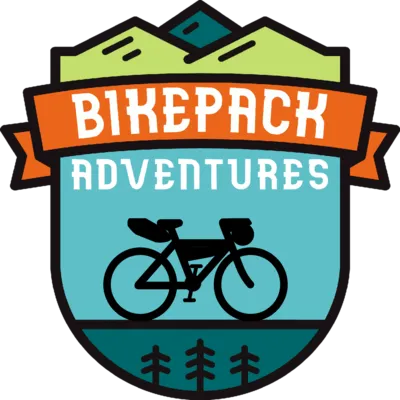 Bikepack Adventures
Bikepack AdventuresThis is a fully self-supported bike packing event. The route is over 80% gravel. It will be run similar to events such as the Tour Divide and other long distance self-supported rides. This event is fully self-supported, no outside help other than what you can find or buy along the way. Services are extremely limited on this route, so you will need to pack accordingly. Water crossings are plentiful. Trackers are recommended. Remember that this route goes through people’s property and near their homes, please respect the landowners and leave the route as you found it or better.

Jonathan Hayward.

Resupply: Resupply on this route is extremely important. The first reliable resupply is at km 283. There are also two sections of the 700km route that are over 150km between reliable resupply locations.
Prepare accordingly: When going off the grid, ensure that you tell your loved ones where you are going and how long you plan to be gone. It may also be prudent to have some form of satellite communication device.
Single-track:
Wildlife: Most sections of this route are very remote. Be aware of your surroundings and be prepared to see wildlife including bears.
The Alberta Rockies 700 is not by any means an easy bikepacking adventure. Every day will challenge you with a plethora of differing surfaces and climbs. Riding on a gravel bike is not recommended unless you have a bike that can accommodate 2″ or larger tires.
Mountain Bike: For mountain bikes, it is recommended to use tires on the bigger end of the spectrum, in order to provide as much comfort as possible. 3″ tires would be overkill, but something in the 2.25″ to 2.6″ range would be ideal. A full-suspension bike would be overkill, unless using an XC full-suspension bike like the Specialized Epic, Cannondale Scalpel, Salsa Spearfish or Chiru Sonic.
Gravel Bike: A cyclocross bike is not recommended for this route. That does not mean it is impossible to complete it on 38C tires, it just means that it would be overly difficult and possibly dangerous. If using a gravel bike with 700 wheels, you’ll want to have a newer style gravel bike that can accommodate tires in the 2″ or larger range. Many parts of the route can be ridden on smaller tires such as 45C, but some parts would be too difficult and risk injury. Only ride a gravel bike if you have a lot of experience riding singletrack on drop bars or you may find yourself walking more than you like.
Setup: Run tubeless if possible. You can use bikepacking style bags or a hybrid setup with small panniers. A lighter set-up allows of easier riding, especially in the hillier and more technical sections. You are also going to want to have a wide range of gear options for climbing the bigger and tougher hills.
The AR700 is no longer run as an annual grand depart. It's important to be aware that trail conditions may not be as up to date as they were in previous years.
Campgrounds: The map shows all the main camping locations along the route including details of if they are first come first served vs reservable.
Wild camping: There are plenty of great wild camping locations along the route as well. Be cautious of not wild camping in Provincial and National Park sections. Be aware that wild camping near official campgrounds is also not allowed in certain areas.
Fresh water: There are plenty of river and creek crossings along the route to keep you hydrated. Although many of these water sources appear to be clean and clear it is always advisable to filter or treat your water.
Food: The options for restaurants along the route are fairly limited and only the main resupply locations in Coleman/Blairmore, Fernie and Sparwood will have reliable restaurant options.
